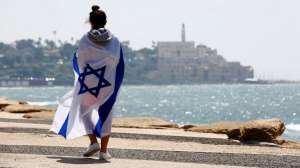Oman is one of those rare places where ancient traditions still hum quietly beneath the rhythm of modern life. Nestled along the southeastern edge of the Arabian Peninsula, this peaceful nation tells its story through wind-carved deserts, mountain forts, and the scent of frankincense drifting through its streets. Though small compared to its neighbors, Oman stands tall in heritage, beauty, and hospitality — a country that blends humility with timeless grandeur.
Once a powerful maritime empire whose influence reached the coasts of East Africa, Oman remains a proud guardian of Arab identity and independence. From the calm blue waters of Muscat’s harbor to the emerald wadis and endless dunes of the Rubʿ al-Khali, every corner of this Sultanate feels like a chapter from an epic that never quite ended. Travelers who step onto Omani soil often sense an atmosphere that’s both old-world and refreshingly calm — where modern life moves forward without losing its soul.

The Sultan of Oman today holds several high-ranking titles — serving as chief of staff of the armed forces, chairman of the Central Bank, Minister of Defence, and Minister of Foreign Affairs. Sharia law forms the foundation of Omani legislation, and the Sultan’s authority remains central to governance. This system of leadership has shaped a society that values both order and tradition, blending conservative values with steady modernization. It’s this unique balance that makes Oman one of the most intriguing nations in the Arabian Peninsula.
Let’s take a closer look at fifteen captivating and often overlooked facts about Oman — insights that reveal how history, culture, and natural beauty intertwine to make the Sultanate one of the region’s most extraordinary destinations.
Oman is the oldest independent state in the Arab world

Oman’s heritage runs deep. The Al Said dynasty has ruled the land since 1744, making it one of the longest-standing monarchies in the Middle East. For centuries, Oman remained relatively isolated from the rest of the world, preserving its tribal traditions and Bedouin customs.
That changed dramatically in the 1970s under Sultan Qaboos’s leadership. His reforms opened the country to education, healthcare, and international relations, transforming Oman from a closed society into a thriving, modern nation. Yet, even today, the essence of Omani identity — rooted in hospitality, modesty, and respect — remains strong.
Archaeological evidence suggests that humans have lived in what is now Oman for more than 106,000 years, placing it among the oldest continuously inhabited regions on Earth.
Oman had the longest-serving ruler in the Middle East

Sultan Qaboos bin Said ascended to power on July 23, 1970, marking the beginning of a new era known as the Omani Renaissance. Over nearly five decades of rule, he guided the nation from isolation toward progress — improving infrastructure, education, healthcare, and women’s rights.
He introduced modern governance while maintaining harmony between Islamic principles and modernization. Under his rule, Oman’s global reputation grew, and its citizens enjoyed stability rare in the region. Although Sultan Qaboos passed away in 2020, his leadership legacy endures through the progress he inspired.
Oman is officially a terrorism-free country

According to the Global Terrorism Index, Oman consistently ranks among the safest nations in the world. The country has maintained a score of 0, meaning it has virtually no incidents of terrorism. This peace is largely due to Omani diplomacy, which emphasizes neutrality, cooperation, and respect for all nations.
Unlike many neighboring countries that have faced regional conflicts, Oman’s political stability and strong leadership have kept it secure. This makes it an appealing destination for tourists seeking an authentic yet safe Middle Eastern experience.
The Arabian Oryx — Oman’s national animal

The Arabian Oryx, also known locally as the Maha, is a striking white antelope native to the Arabian Peninsula. With its elegant horns and gentle disposition, it symbolizes endurance and purity. Once on the brink of extinction, the species found refuge in Oman’s deserts, where conservation efforts revived their population.
Today, the Arabian Oryx stands proudly as the national animal of Oman, even lending its name to one of the country’s major gas stations. It’s a reminder of Oman’s commitment to wildlife protection and environmental balance.
Sultan Qaboos University — the first in Oman

Established in 1986, Sultan Qaboos University became the nation’s first public university and remains its most prestigious academic institution. Located in Al Khoud, near Muscat, it is a vast campus offering housing, libraries, and student facilities that form an entire academic community.
Admission into the university is highly competitive, requiring excellent grades and aptitude. Its graduates now serve as leaders across Oman’s ministries, industries, and cultural sectors, playing a vital role in shaping the country’s future.
Omanis are world-renowned shipbuilders

Oman’s connection to the sea runs deep. Bordered by water on three sides — the Arabian Gulf, the Gulf of Oman, and the Arabian Sea — Omanis have been building and sailing ships for centuries. The coastal city of Sur once thrived as a global center for dhow construction, producing vessels that reached East Africa, India, and even China.
These traditional wooden ships, built without nails, are considered masterpieces of maritime craftsmanship. The shipbuilding tradition continues today, preserving techniques passed down through generations while celebrating Oman’s maritime legacy.
Omanis are among the finest breeders of Arabian horses

The Arabian horse, one of the most ancient and admired horse breeds in the world, traces much of its origin to the Arabian Peninsula — including Oman. Known for their refined beauty, high intelligence, and unmatched endurance, these horses have long been a symbol of pride and nobility across the Arab world.
In Oman, the breeding of Arabian horses is not merely a profession but an art form and a cherished tradition. Generations of Omani breeders have carefully preserved the purity of bloodlines, producing horses famed for their spirit and grace. These animals have also contributed to the development of other global horse breeds, further enhancing Oman’s reputation as a cradle of equestrian excellence.
Oman has four UNESCO World Heritage Sites

Oman’s landscape holds treasures of cultural and historical significance recognized by UNESCO. There are four designated World Heritage Sites within the Sultanate:
-
Bahla Fort – a monumental clay fortress from the medieval period, showcasing traditional defensive architecture.
-
The Archaeological Sites of Bat, Al Khutm, and Al Ayn – among the most complete Bronze Age settlements in the world.
-
The Aflaj Irrigation Systems – intricate water channels that have sustained agriculture for over 1,500 years.
-
The Land of Frankincense – encompassing Dhofar’s Wadi Dawkah and ancient trading ports such as Khor Rori and Al-Baleed.
Each of these locations tells a story of Oman’s rich past — of trade, ingenuity, and resilience in the desert environment.
Alcohol sales in Oman require a license

While Oman is open to tourism and modernization, it remains deeply respectful of Islamic traditions. Alcohol consumption is tightly regulated — it is allowed only for non-Muslims who hold an official license issued by the police.
Licensed hotels, restaurants, and private clubs may serve alcohol, but public drinking and intoxication are strictly prohibited. This approach reflects Oman’s philosophy of cultural respect: balancing religious values with hospitality toward visitors.
Frankincense trees flourish naturally in Oman

For millennia, frankincense has been one of Oman’s most valuable natural exports. The resin, prized for its rich aroma and spiritual symbolism, was once worth more than gold. It played a vital role in ancient trade routes, linking Oman to Egypt, Rome, and India.
The Dhofar region, especially around Salalah, remains the heartland of frankincense production. The trees grow naturally in the arid climate, yielding sap that is harvested by carefully cutting the bark. Even today, Omani frankincense is regarded as some of the finest in the world, used in perfumes, medicine, and traditional ceremonies.
Coffee is Oman’s national beverage

In Oman, coffee — or “kahwa” — represents far more than a drink. It is an essential element of Omani hospitality and social life. Served in small cups and flavored with cardamom or rose water, kahwa is always accompanied by dates or sweets.
When visiting an Omani home, guests are greeted with fresh kahwa as a sign of respect and welcome. It is enjoyed multiple times a day, and sharing it signifies friendship, unity, and peace. Kahwa is such a vital part of daily life that it has become a cultural emblem of the nation, found in homes, souqs, and even government gatherings.
Green turtles migrate to Omani shores

Every year, green turtles embark on a long migration to Oman’s eastern shores, particularly the beaches of Ras Al Jinz in Al Sharqiya. This sanctuary is one of the few remaining nesting grounds for these endangered creatures.
Visitors can witness this extraordinary cycle — from female turtles laying eggs before dawn to the sight of baby turtles making their first journey back to the sea. The Omani government has implemented strict protection laws to preserve these nesting sites, banning hunting and regulating tourism to ensure minimal disturbance.
This commitment to conservation highlights Oman’s role as a guardian of its natural heritage.
Omani doors are beautifully decorated

Omani architecture carries a timeless elegance, blending utility with artistry. From majestic forts and mosques to private homes, every structure tells a story. One particularly striking feature is the ornamental doors — hand-carved wooden masterpieces often inlaid with brass or painted with intricate motifs.
Each design reflects the family’s heritage and sometimes even the region’s history. Walking through old neighborhoods in Muscat, Nizwa, or Sur, one encounters doorways that feel like windows into the past — symbols of craftsmanship and quiet pride.
Frankincense fills every Omani home

No Omani household is complete without the gentle, earthy aroma of burning frankincense. Every evening, families light mabkharas (traditional incense burners) to perfume their living spaces and create a sense of calm.
The ritual is both spiritual and cultural — believed to purify the air, welcome guests, and bring blessings. The fragrance lingers in the streets, making even a walk through a small Omani village feel like a sensory journey through time.
Winter is the best season to visit Oman

Oman’s climate varies greatly throughout the year, but the winter months — from November to March — offer the most pleasant weather for exploration. The temperatures are mild, resembling a Mediterranean climate, with cool evenings and sunny days ideal for sightseeing, hiking, or camping in the desert.
During this season, the country hosts festivals, outdoor markets, and cultural events, giving travelers a deeper sense of Omani life. Whether you explore the dunes of Wahiba Sands, the fjords of Musandam, or the coastal beauty of Salalah, winter truly reveals the best of Oman.















